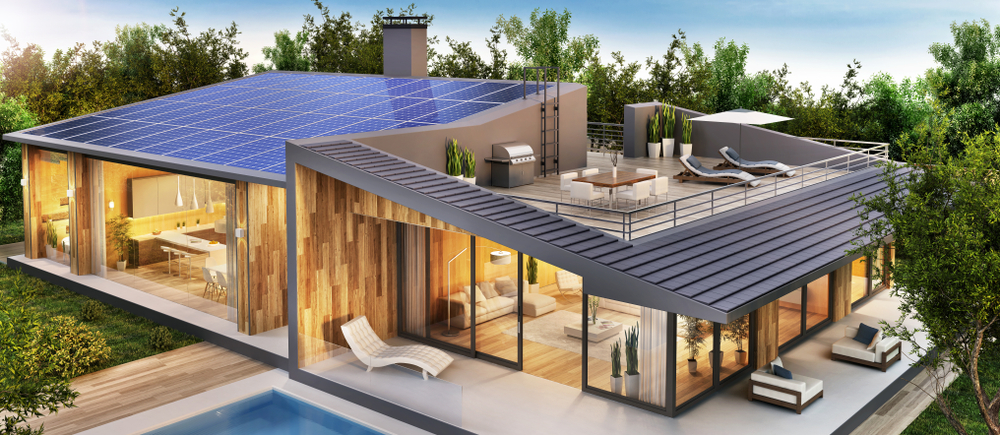Financing Guide to Solar Power for Residential Real Estate

Solar power boomed in 2022 with residential solar projects growing by a shocking 40 percent according to the Solar Energy Industries Association. This was the result of a recording setting 700,000 homeowners installing solar into their homes.
In most cases, a homeowner will have to finance a solar system as they tend to be expensive. According to EnergySage, in 2023, the national average for a 10-kilowat solar system came in around $20,000. This figure considers the 30% federal solar tax credit.
Figuring out a solar system and the cost can be intimidating so we thought it would be helpful to take a look at some of the things you will have to consider before installing a solar system.
Do your research
The cost of a solar system can vary by state, so it is always best to research the cost of solar panels in your area.
“Before you investigate how you are going to pay for it, it’s easy to find out what you might want to buy and what it might cost,” said Joel Rosenberg, a member of the special projects team at Rewiring America, in a recent CNBC article.
Rosenberg recommends checking EnergySage to find installers in your area and to get quotes on a solar system. This will give you a realistic idea of what a system for your specific house. Once you have a realistic idea of the cost, you can look at financing options.
Check out local energy financing programs
Many states offer solar financing programs, so it is a good idea to check with your local utility and your state energy office to see what options are available in your local area.
“They may not be directly involved, but often they can flag things that may be worth looking into,” said Madeline Fleisher, an Ohio-based environmental and energy lawyer in the recent CNBC article.
As an example, in Ohio, the state offers a reduced rate on a solar loan with certain lenders. Check into all available program your state or country offers to help cover the cost of a solar installation.
Get loan quotes from multiple lenders
If you are taking out a loan to cover the cost of a solar installation, check with at least three to five financial institutions. When shopping for financing, always make sure you carefully read through the terms and conditions.
Possible lenders to check out include:
- Local banks
- Credit unions
- National bank
- Specialized banks, also known as a green banks which focus on loans for environmentally friendly projects
Check out Green Bank Network or the Coalition for Green Capital to find both national and local green banks.
Understand all fees, terms, and conditions for loan
Make sure you fully understand any fees that are associated with your solar loan as well as the terms and conditions of the loan.
As an example, some loans may allow you to amortize your loan to help reduce the amount of your loan, but in most cases, this can only be done once. If you have taken out a $12,000 loan to cover your system and receive a tax credit of $3,000 you can use that money to pay down the loan to $9,000. However, you can usually do this only once and in most cases, it must be done in the first 12-18 months of the loan.
Home equity loans and HELOCs may be a good choice for a financing option if you have enough equity in your home to cover the cost. Always check the interest rate as well as the terms and conditions of the loan.
Solar financing market is controlled by a few lenders
While there are plenty of options available to finance a solar system, according to the data, five finance companies have financed a whopping financed 71% of the entire residential market in 2022.
Here are the top three financers for solar in 2022:
- GoodLeap
- Sunrun
- Sunnova
Solar leasing is attractive option but comes with downsides
Leasing a solar system is usually an option and can be a good way to avoid the cost of installing a new solar system. In addition, if you lease the system, you are not responsible for maintenance or upkeep of the system.
However, there can be downsides for homeowners. In general, leasing is more expensive than purchasing a system and it also means you will forfeit the 30% tax credit. In addition, leasing a solar system can present problems if you decide to sell the home.
If you are considering leasing a solar system, be sure to get all the details of the lease including any fees for transferring the lease as well as how any repairs and maintenance issues will be dealt with.
